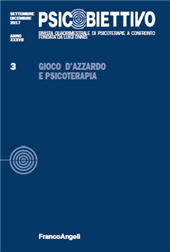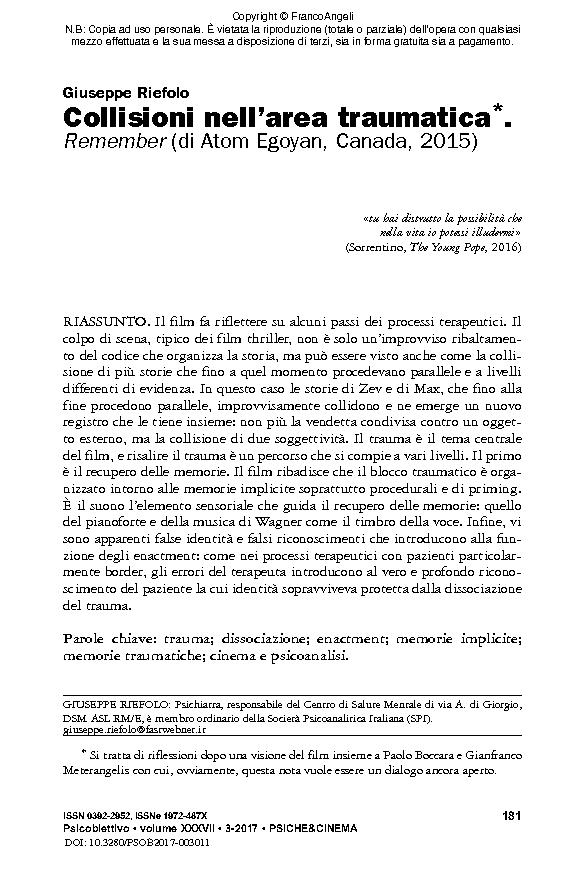Collisioni nell'area traumatica : remember (di Atom Egoyan, Canada, 2015)
181-196 p.
Il film fa riflettere su alcuni passi dei processi terapeutici. Il colpo di scena, tipico dei film thriller, non è solo un'improvviso ribaltamento del codice che organizza la storia, ma può essere visto anche come la collisione di più storie che fino a quel momento procedevano parallele e a livelli differenti di evidenza. In questo caso le storie di Zev e di Max, che fino alla fine procedono parallele, improvvisamente collidono e ne emerge un nuovo registro che le tiene insieme: non più la vendetta condivisa contro un oggetto esterno, ma la collisione di due soggettività. Il trauma è il tema centrale del film, e risalire il trauma è un percorso che si compie a vari livelli. Il primo è il recupero delle memorie. Il film ribadisce che il blocco traumatico è organizzato intorno alle memorie implicite soprattutto procedurali e di priming. È il suono l'elemento sensoriale che guida il recupero delle memorie: quello del pianoforte e della musica di Wagner come il timbro della voce. Infine, vi sono apparenti false i
dentità e falsi riconoscimenti che introducono alla funzione degli enactment: come nei processi terapeutici con pazienti particolarmente border, gli errori del terapeuta introducono al vero e profondo riconoscimento del paziente la cui identità sopravviveva protetta dalla dissociazione del trauma. [Testo dell'editore].
The movie calls to ponder on some of the steps of the therapeutic processes. The coup de theater, typical of thriller movies, represents not only a sudden reversal of the code that organizes the story, but can also be interpreted as the collision of several stories that went parallel and at different levels of evidence until that moment. In this case, we are presented with Zev's and Max's stories, which till the end go in parallel. However, they suddenly collide, and a new element emerges that keeps them together: the collision of two individualities and no longer revenge shared against an external object. The central theme of the movie is trauma, and to get to its roots, it is necessary to make a journey characterized by several levels. The first one is represented by the recovery of the memories. The film reiterates that the traumatic block is organized around the implicit, mainly procedural and priming memories. Sound is the sensory element that drives memory retrieval: that of Wagner's piano and music as.
well as the voice tone. Finally, there are illusive false identities and false recognitions that introduce the function of enactment: as in therapeutic processes with particularly borderline patients, the therapist's mistakes introduce the true and deep recognition by the patient whose identity until then survived protected by the trauma dissociation. [Publishers' text].
-
Articoli dello stesso fascicolo (disponibili singolarmente)
-
Informazioni
Codice DOI: 10.3280/PSOB2017-003011
ISSN: 1972-487X
PAROLE CHIAVE
- Trauma, dissociazione, enactment, memorie implicite, memorie traumatiche, cinema e psicoanalisi ;Trauma, Dissociation, Enactments, Implicit Memories, Traumatic Memories, Cinema and Psychoanalysis



